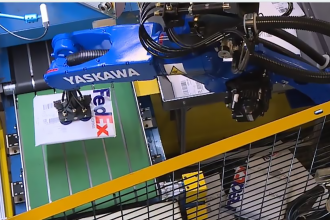Rolling out a WMS

Once you’ve decided to pull the trigger on a WMS implementation, it’s time to start planning.
One of the best moves you can make to improve the efficiency and productivity of your warehouse is to add a warehouse management system (WMS). With a growing demand for rapid and accurate order fulfillment, many managers are creating a standard operating procedure across their various facilities. A WMS is a good way to accomplish that.
If you’re considering adding a WMS to your operations, there are several steps to take prior to implementation. First, you’ll need to develop a solid plan for roll out. You’ll also need to get a handle on all of your processes, KPIs, and an implementation timeline for the expected go-live date.
You’ll also need to assemble a team dedicated to the WMS implementation. Throughout the process, there will be unexpected challenges that come along, and having a selected group of individuals who can dedicate the time to address the challenges will be important. You may also want to hire a consultant to help guide the process. An experienced consultant will guide you through evaluating various options and recommend the best fit WMS vendor for your specific operations. For instance, while there are several big, tier-one WMS providers, they may not be the right fit for you. A consultant will know other options and work with you to select the right one.
Challenges you may face include budget, customizations, integrations, data accuracy, and latency issues. A WMS is not a one-size-fits-all software solution, so customization may be required. This can be an expensive proposition, one that you will have to work through during the implementation. You’ll also need to ensure your new WMS integrates well with your existing software packages, something that may require outside assistance. Most WMS solutions require a reliable high-speed Wi-Fi connection. Poor Wi-Fi coverage in a facility can cause latency issues, data loss, and other communication disruptions that directly impact WMS functionality.
Lastly, provide staff training to ease the learning curve. Proper training documentation is essential to your success, too. Having digital and hard copies readily available facilitates easy access to knowledge and can serve as a resource for training new employees.
A typical timeline for implementation is approximately six to eight months, depending on the selected vendor and available resources. As you roll out the software, expect hiccups—bugs are to be expected when you go from the testing environment to the production environment. Post-go live will require support to help identify and resolve any performance issues. As you collaborate with your vendor and/or consultant, you should be able to address those hiccups as they arise. The faster you can address those bugs as you roll out, the faster you can reap the rewards of your new software, and avoid unplanned costs.
Source: Ashley Rhodes, St. Onge
For more information about the Solutions Community: mhi.org/solutions-community
For further articles from the Solutions Community:
Are You Data Rich, Intelligence Poor?
For a Successful Software Implementation, Focus on the People
Sustainability in the Warehouse—Part 1
How to Use Software to Attract and Retain Talent
Digitization of Intralogistics: Software
Forward Pick Area—Design and Operations
Maintenance Check: From Reactive to Predictive



